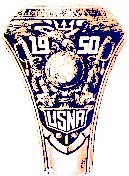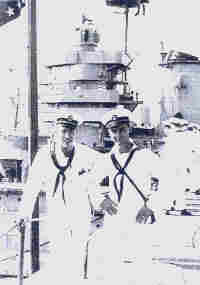Please send in your service anecdotes for publication. Either
e-mail or typewritten snail mail is fine.
Posted 2/23/06: (From the Editor, as told by Bob Murphy)
It all started on a three day trip to New London, NH. Bob
and Molly had come up from their home in Newburyport, MA, in December 2005, to
join their daughter and son-in-law who bought a vacation home in a delightful
community named "Eastman" in the town of Grantham, NH.
Bob visited the New London liquor store for necessities on a
cold, snowy day. On the way out of the store his ring, loosened by the cold
temperatures, slipped from his finger into a snow bank near the sidewalk.
When he discovered the loss, he retraced all steps, but
to no avail. He had worn this ring, through thick and thin, for the last
fifty-five years, and it showed the wear and tear of its many knuckle knocker
experiences. He despaired of ever seeing it again - unless - fate came to his
rescue.
He received a call in January from Timothy Elizabeth
Woodbury, Ring Bank Coordinator at USNAAA, asking if he'd lost a class ring. She
said that Robert J. _____y, Jr. were the only letters distinguishable on the
inside rim. When Bob settled down, she explained that it had been found outside
the liquor store in New London by a lady from Eastman who had then called a
retired USNA '49 graduate living in the area. He was unable to identify the name
in the USNA Register, so mailed the ring to Alumni House in Annapolis. Timothy then mailed
the ring to Bob, and the rest is history.
These are Bob's words, in a thank you note to Timothy
Woodbury, "My ring arrived yesterday and I am so happy to have it back on
my finger. You have done a wonderful job in researching a ring which has been
worn for fifty years and getting it back to its rightful owner. Also the
information you sent on Carol Moses, who found the ring and CDR Robert James,
USNA '49, who sent the ring to you, was most helpful. I have talked to both
Carol and Robert and thanked them for their efforts and we hope that we can meet
some time in the future and discuss this episode in our lives.
Timothy,
you are the person who put it all together and who deserves tremendous thanks
for all your efforts and expertise. The Alumni Association should be very proud
of you for what you do for an alumnus who has a problem."
A copy of Bob's letter went to George Watt, President and
CEO, USNAAA.
Bob's wife, Molly, insisted that he have the ring made
smaller, and the local jeweler is refitting it. Perhaps we all should check our
rings for clarity of the engraved name on the inside rim, in case we go to the
liquor store.
Posted 2/22/06: (Keith Wilson '50, designated
Poet Laureate, from Gerry Coleman)
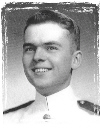
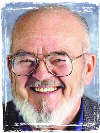
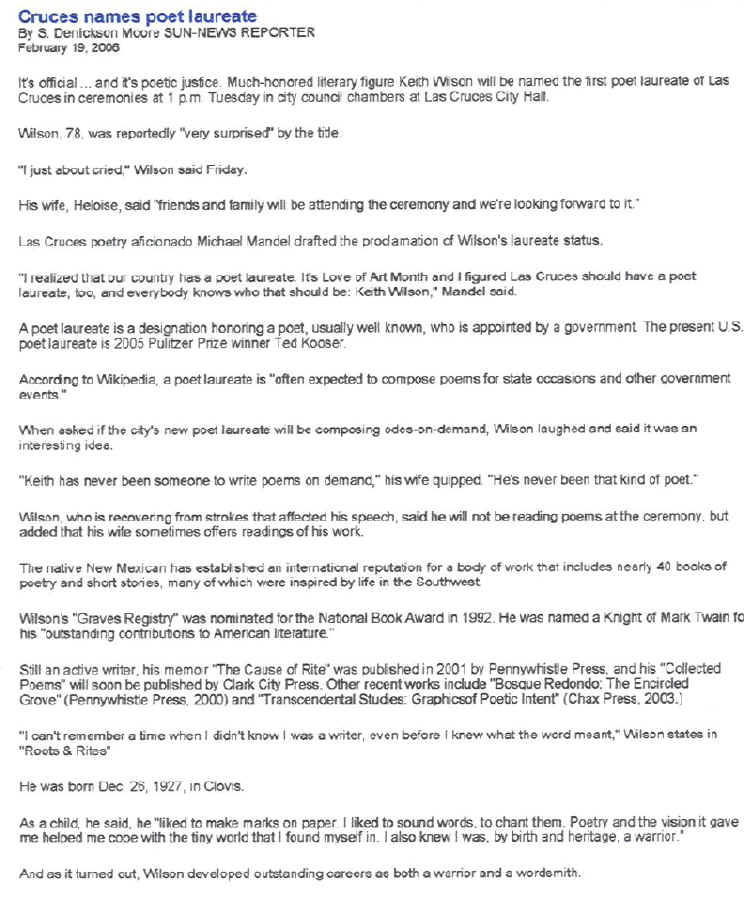
Posted 9/25/02: (From a Shipmate Article By Ed Grunwald)
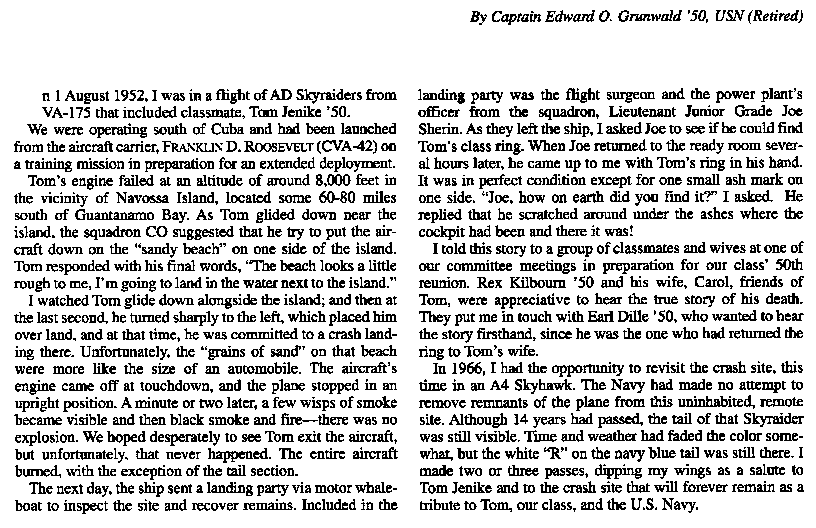
Posted 11/07/02: (From Chuck Mull)
Subject: Fw: do it yourself CPR
Do-it-yourself CPR
HOW
TO SURVIVE A HEART ATTACK ALONE
If everyone who gets this sends it to 10 people, you can bet that we'll save at
least one life.
Let's say it's 6:15 p.m. and you're driving home (alone of course), after an
unusually hard day on the job. You're really tired, upset and frustrated.
Suddenly you start experiencing severe pain in your chest that starts to radiate
out into your arm and up into your jaw. You are only about five miles from the
hospital nearest your home; unfortunately you don't know if you'll be able to
make it that far. What can you do? You've been trained in CPR but the guy that
taught the course neglected to tell you how to perform it on yourself.
Since many people are alone when they suffer a heart attack, this article seemed
to be in order. Without help, the person whose heart stops beating properly and
who begins to feel faint, has only about 10 seconds left before losing
consciousness.
However, these victims can help themselves by coughing repeatedly and very
vigorously. A deep breath should be taken before each cough. The cough must be
deep and prolonged, as when producing sputum from deep inside the chest.
The cough must be repeated about every 2 seconds without let up until help
arrives, or until the heart is felt to be beating normally again.
Deep breaths get oxygen into the lungs and coughing movements squeeze the heart
and keep the blood circulating. The squeezing pressure on the heart also helps
it regain normal rhythm. In this way, heart attack victims can get to a
hospital.
Tell as many other people as possible about this, it could save their lives!
>From Health Cares, Rochester General Hospital via Chapter 240s newsletter
AND THE BEAT GOES ON ... (reprint from The Mended Hearts, Inc. publication,
Heart Response)
NOTE: Please asks family and friends, to print out a few copy's, and asks Stores
to put it in their windows. Because a lot of people DON'T have computers, and
can't get this information. Do your part to help those save their own lives.....
Posted 8/29/00: (From Chuck Mull)
> > > The Story Behind the Haunting Song "TAPS"...
> > >
> > > According to an unknown writer, "Taps" is the
song that gives us that
> > > lump in our throats and usually creates tears in our eyes.
But do
you
> > > know the story behind the song? If not, I think you
will be
delighted
> > > to find out about it's humble beginnings.
> > >
> > > It all began in 1862 during the Civil War, when Union Army
Captain
> > > Robert Ellicombe was with his men near Harrison's Landing
in
Virginia.
> > > The Confederate Army was on the other side of the narrow
strip of
land.
> > > During the night, Captain Ellicombe heard the moans of a
soldier who
> lay
> > > mortally wounded on the field. Not knowing if it was
a Union or
> > > Confederate soldier, the Captain decided to risk his life
and bring
the
> > > stricken man back for medical attention.
> > > Crawling on his stomach through the gunfire, the Captain
reached the
> > > stricken soldier and began pulling him toward his
encampment. When
the
> > > Captain finally reached his own lines, he discovered it was
actually
a
> > > Confederate soldier but the soldier was dead.
> > > The Captain lit a lantern and suddenly caught his breath
and went
numb
> > > with shock. In the dim light, he saw the face of the
soldier. It
was
> > > his own son. The boy had been studying music in the
South when the
war
> > > broke out. Without telling his father, he enlisted in
the
Confederate
> > > Army.
> > > The following morning, heartbroken, the father asked
permission of
his
> > > superiors to give his son a full military burial despite
his enemy
> > > status. His request was only partially granted.
> > > The Captain had asked if he could have a group of Army band
members
> play
> > > a funeral dirge for his son at the funeral. The
request was turned
> down
> > > since the soldier was a Confederate; but, out of respect
for the
> father,
> > > they did say they could give him only one musician.
> > > The Captain chose a bugler. He asked the bugler to
play a series of
> > > musical notes he had found on a piece of paper in the
pocket of the
> dead
> > > youth's uniform. This wish was granted. The
haunting melody we now
> > > know as "Taps" used at military funerals was
born.
> > >
> > > Day is done gone
> > > the sun from the Lakes
> > > from the hills
> > > from the sky
> > > all is well
> > > safely rest
> > > God is nigh.
> > >
> > > Fading light Dims the sight,
> > > And a star gems the sky,
> > > Gleaming bright,
> > > From afar,
> > > Drawing nigh,
> > > Falls the night.
> > >
> > > Thanks and praise,
> > > For our days,
> > > Neath the sun,
> > > Neath the stars,
> > > Neath the sky,
> > > As we go,
> > > This we know,
> > > God is nigh
Posted 8/09/00:
HIS CLASS RING CAME HOME [John R. Dunham '50]
Omaha World-Herald 08/05/00 (C08-07)
Copyright 2000 The Omaha World-Herald Company
Omaha World-Herald
August 5, 2000, Saturday SUNRISE EDITION
SECTION: NEWS; Pg. 27; Michael Kelly
LENGTH: 677 words
HEADLINE: HIS CLASS RING CAME HOME
BODY:
On a gold chain, a visitor to Omaha wears a very special class ring - U.S.
Naval Academy, class of 1950. It's the key to an amazing story. At a
Midshipman's Ring Dance long ago, she had placed it on the finger of her date,
John Dunham. A year later, on his graduation day, they married in the Naval
Academy chapel.
There was no Air Force Academy then, and Dunham accepted appointment to the
Air Force. He became a navigator in the Korean War, and later worked on a Cold
War RB-29 spy plane photo-mapping an area between Japan and the Soviet Union.
A daughter was born in August 1952, and Dunham looked forward to seeing her
and his wife, Mary, in November. But on Oct. 7, 1952, a Soviet fighter shot
the plane down. A Soviet patrol vessel recovered his body, attached to a
parachute. Vasily Saiko, a sergeant in the Soviet Maritime Border Guards,
removed the heavy class ring and kept it. But Mary Dunham didn't know that.
The Soviet Union denied any knowledge of the plane's fate. Mary says she
struggled for her sanity. "I didn't know if I was a wife or a
widow," she said this week at the Gold Star Wives national convention.
"I didn't know what to do or where to go. I thought he could be a Soviet
prisoner, being tortured. It was agony." In 1955, the U.S. government
said her husband was presumed dead. But it was another decade before she
married again.
Her daughter, Suzanne, who resembles the father she never saw, graduated from
Wellesley College and from law school. The Russian sailor, meanwhile, held on
to the ring for decades. Joint Commission Late in 1993, Vasily Saiko saw a TV
commercial that startled him. This was after the Soviet Union had
disintegrated and Russian President Boris Yeltsin promised to help find out
about missing Americans. The Joint Commission on POW-MIA Affairs was asking
Russians with information to come forward. Vasily's wife, Lyuba, told her
husband the time had come. He took a 24-hour train journey to Moscow, and
presented the ring to the commission. Engraved inside was "John Robertson
Dunham."
On Dec. 7, 1993, Mary received a phone call with the news. A few weeks later
at a Pentagon ceremony, she received the ring. But what of his remains? Of the
eight crew members on the U.S. spy plane, Dunham's body was the only one
recovered. Saiko said he was buried on the islet of Yuri, and searchers found
the grave Sept. 2, 1994. DNA tests confirmed the identity.
On Aug. 1, 1995, with full military honors, Capt. Dunham's remains were buried
at Arlington National Cemetery. Among those attending were Vasily and Lyuba
Saiko. For a week, they stayed with Mary and husband Don Nichols at their home
near Baltimore. She praised the Russian couple for their honor and decency in
returning the ring. SAC Museum Finally burying her first husband's remains was
important, Mary said, because she also could bury her anger and frustration.
Coming to the Omaha area, home of the Strategic Air Command through the Cold
War, allows her to do something else. Today she will visit the Strategic Air
Command Museum on Interstate 80 near Ashland, Neb., and view a display about
Cold War shootdowns. Included is the story of her first husband. She feels
sorry for the families of his crew mates, who had no burials. The U.S.
government has confirmed 38 downings of U.S. aircraft during the Cold War. If
some think the Cold War wasn't a real war, Mary Dunham Nichols believes
otherwise - and has a ring to prove it.
She wishes that as a young woman she had known of the Gold Star Wives, which
started in 1945. Members' husbands died while in military service. It would
have helped, Mary said, to have people to talk with about her fears and
frustration. Said Paula Muth of Bellevue, a past national president of the
organization: "It's a real sisterhood." Mary, 74, said she hopes
people appreciate the sacrifices that were made and the importance of the
military. "There's a lack of interest in the military," she said.
"Nobody feels responsible for the defense of our country. The price is
high."
GRAPHIC: Mug/1 Dunham Nichols
LANGUAGE: ENGLISH
LOAD-DATE: August 5, 2000
The following article by Jack Akin appeared in the June issue of SHIPMATE on page 38:
A
Navy Punch!
Back in 1949 as Second Classmen, we were in high spirits preparing for
the Farewell Ball during June Week. I had another reason to rejoice. My OAO had
said “yes” to my proposal and we planned a wedding upon graduation in 1950.
However, I had as yet no inkling of the resolve with which my fiancée viewed
proper behavior.
We entered Dahlgren Hall for the dance splendidly; me in starched whites
and my drag in an adorable pink evening gown with rear bustles. I left her with
friends while venturing to the punch table for refreshments.
As I pondered selections, something cool and wet ran down my right leg.
Stepping back, I exclaimed, “That helps.” and turned to see a Navy captain
juggling his pink punch cup. His response was, “Well, if you wouldn’t stand
so close to the table, son, those things wouldn’t happen.”
What could I say! When I returned with drinks she exclaimed, “What
happened to you?” I proffered that the evening hadn’t started well, and
related my run-in with the captain. She immediately excused herself and was
gone, in his direction. I followed, but too late! As she approached the captain
and his wife, she pretended to trip and all but fell. In the process, she
flipped her cup, and alas, the captain turned wet and pink. Excusing herself,
she fled the scene.
I beat a hasty retreat and caught up with her safely out of sight of the
captain’s commotion. We quickly decided to skip the rest of the dance and lie
low.
I determined this was the right young lady to spend the rest of my life
with. Yes, we have had memorable moments along the way, though none with the
dramatic “punch” of this incident. We enjoyed a career in the Air Force (I
didn’t care to run into that Navy captain again) and now look forward to our
50th wedding anniversary on 4 June, 2000.
Jack
Akin ’50
(Photo of your actual
punch table at the Farewell Ball in Dahlgren Hall, from '49 Lucky Bag)
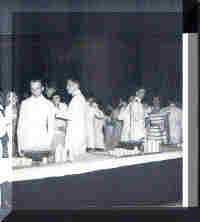
The following article by Jack Akin appeared in "The Legacy of Daedalus",
Page 180, Copyright 2000, by Turner Publishing Co., for the Order of the
Daedalians:
BRAKES IN REVERSE
TDY (temporary duty) trips to Furstenfeldbruck Air Force Base, Germany, were at the top of our pilots' lists for desirable destinations. We were the 38th Bombardment Wing (L) , flying twin engine B-26's in support of 12th Air Force, USAFE NATO missions during the cold war. Our operating location was Laon Air Base, France; about an hour north of Paris, with spartan tent frame facilities. So this mission to "Fursty" was a trip to a winter "Shangri-La".
The three ship formation was headed by Ben Martin, a crusty 822nd Bomb Squadron pilot from St. Joseph, Missouri, where many of our pilots hailed from. Lee Glenn was his left wing and I was his right. A bit of ice accumulation on the way over from France. It was the winter of 1952-1953 and wing ice was considered "frosting" on the cake to come.
Soon it was evident that a snowstorm in the Furstenfeldbruck area would make questionable our visibility for a landing. Munich Approach Control warned of low ceilings and visibility, which was usual at this time of year.
Approaching the field with the help of radio compass bearings, we got lucky and sighted it visually at landing pattern altitude. Ben called for a typical 360 degree left turn when directly over the runway, with landings at 30 second intervals. As Ben turned, we established the stream with Lee second and me last in the orbit.
What happened next remains indelibly etched in my mind.
Ben skidded! His aircraft went off the end of the runway. The tower acknowledged ice - what a great time to introduce an unwanted element.
Lee did his best - and veered off to the left into a ramp area where his aircraft - still on its gear, came to a halt.
Instinct took over. "Don't hit Ben". "Go right off the runway to not hit Lee". Or - "DO A 180 DEGREE TURN" - midway down the runway. (You have never tried this kind of thing, the runway may not be iced for its full length, the gear may not hold up, it may not be possible from an engineering viewpoint, don't even think about it.) I decided to do it.
Slowly I forced left throttle, feeling the right rotation of the aircraft without right lateral movement. For sure we were on ice! Full left throttle; and we wheeled about so fast that it took complete right throttle and dropped left throttle to abate the spin, for a 180 degree turn. Luckily, I was able to coordinate full throttle on both engines when we reached a complete reversal of landing direction. We stopped on a slippery dime!
"Yes, tower, we're still on the runway." Taxied back as if all were normal, happy that reflexes and intuition were able to respond to an event not talked about in training manuals.
That's how they're written. World War I pilots did it. All pilots have done it. Innovation at work. Could I repeat it today? No way!
COL John C. Akin, USAF (Ret), Named Member #9583 for Founder
Gerard H. Hughes
The following article by Jack Akin appeared in the March 1999 issue of "Officer
Review" magazine, published by the Military Order of the World Wars:
The Twilight Zone
It was May 1953, at Laon Air Base, France; home of the 38th Bomb Wing (L) Night
Intruders, where I was a B-26 pilot partaking in proficiency flying. The current training involved
practice GCA (Ground Controlled Approach) landings -- we would contact GCA in the air, follow instructions to land, and then go around for another practice run. It was a typical French
day - overcast, low cloud cover, visibility 500 feet - ideal for these
touch-and-go landings.
I contacted GCA. They acknowledged. "Turn right, turn left, turn right - yup, we've got you.
Now take a course of 120 degrees, and descend to 1,700 feet; you are about to enter the traffic pattern."
"Left to 030 degrees, descend to l,200 feet." "We have you at l,200 feet. Left to 300 degrees on cross wind. You are one mile north of the landing runway. Go through the landing procedures checklist."
"Left on final to 210 degrees." "Commence descent at 500 per minute, adjust flaps as necessary; you are one half mile north of the runway, on course, on glide path." (Landing gear was
lowered; flaps were at 38 degrees. ) "You should be exiting cloud cover, visibility now l,000 feet. Take over visually for landing runway 210.
Go to tower frequency. You are cleared for visual landing."
"Roger." Perfect alignment - yet, the view was strange! I was rattled. This was not my runway, not my base. Quickly I raised the gear, applied throttle, raised flaps, went around and gained altitude, climbing slowly toward 090 degrees.
When I reached 5,000 feet altitude and contacted Laon Air Base Tower, a distant voice affirmed that
we were nowhere near the base.
We used a radio compass to regain navigational bearings and returned to the base. The weather had cleared, and we landed
without incident, except for my debriefing statements.
GCA had no explanation and claimed to have brought us in, but had not! My crew witnessed what had happened.
Not only had GCA failed to identify our aircraft correctly, which can be understandable; but the instructions to what may have been another aircraft in the area, were so plausible that we followed them
to - and this is the mystery - a distant runway that turned out to be Reims Airport, some 30 miles southeast. None of the GCA crew wanted to touch this one! It remains unsolved to this day.
COL John C. Akin, Granite State Chapter, MOWW
Officcr Review, March 1999
